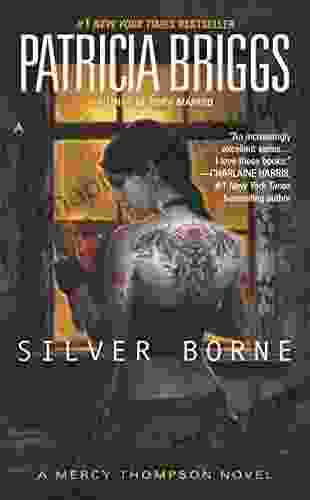The Rite of Spring at 100: Unveiling the Profound Musical Meaning and Interpretation of a Masterpiece

Igor Stravinsky's The Rite of Spring, first premiered in 1913, stands as a monumental musical masterpiece that forever transformed the course of music. This groundbreaking work, celebrating its centennial this year, invites us on a captivating journey exploring its profound musical meaning and the multifaceted interpretations it has inspired.
Musical Structure and Innovation
The Rite of Spring is a complex and mesmerizing musical composition. Its unconventional rhythms, jarring dissonances, and evocative melodies challenge traditional notions of harmony and tonality. Stravinsky's innovative use of polyrhythms, polytonalities, and unusual time signatures creates a sense of primal energy and relentless momentum.
5 out of 5
| Language | : | English |
| File size | : | 30845 KB |
| Text-to-Speech | : | Enabled |
| Screen Reader | : | Supported |
| Enhanced typesetting | : | Enabled |
| Print length | : | 536 pages |
The work is divided into two parts. Part I, titled "The Adoration of the Earth," depicts the awakening of nature and the rituals of spring. Part II, "The Sacrifice," culminates in a violent and enigmatic sacrificial dance. Each movement is meticulously crafted, conveying a vivid and evocative narrative through music.
Thematic Exploration
Beneath the surface of The Rite of Spring's musical innovations lies a rich and complex thematic exploration. Stravinsky sought to capture the essence of ancient pagan rituals, exploring themes of fertility, renewal, and sacrifice. The music evokes the raw energy and primal instincts of the natural world.
The work's central theme is the sacrifice of the Chosen Maiden, who is ritually killed to ensure the fertility of the earth. Through this allegory, Stravinsky explores the cycle of life, death, and rebirth, as well as the darker aspects of human nature.
Influence and Legacy
The Rite of Spring has had a profound influence on subsequent generations of composers and musicians. Its innovative musical language and evocative power have inspired countless works in various genres, from classical music to jazz and popular music.
The work has also been the subject of numerous interpretations, both musical and theatrical. Choreographers, directors, and artists have been drawn to its captivating rhythms and primal energy, creating a diverse range of interpretations that highlight its multifaceted nature.
Contemporary Relevance
A century after its premiere, The Rite of Spring remains a compelling and relevant work. Its themes of nature, sacrifice, and the human condition continue to resonate with audiences worldwide.
In an era marked by environmental consciousness and social upheaval, The Rite of Spring's exploration of primal instincts and the cycle of life and death offers a profound reflection on our relationship with the natural world and the human experience.
Igor Stravinsky's The Rite of Spring is a musical masterpiece that continues to captivate and challenge audiences. Its innovative musical language, profound thematic exploration, and enduring legacy have cemented its place as one of the most significant works in the history of music. As we celebrate its centennial, we are reminded of the transformative power of art and its ability to reflect and shape our understanding of the human experience.
For those seeking a deeper understanding of The Rite of Spring, I highly recommend the book "The Rite of Spring at 100: Musical Meaning and Interpretation." This comprehensive volume explores the work's musical structure, thematic content, historical context, and diverse interpretations. Through insightful essays by leading scholars and performers, the book provides a multifaceted perspective on this iconic masterpiece.
- Wikimedia Commons
5 out of 5
| Language | : | English |
| File size | : | 30845 KB |
| Text-to-Speech | : | Enabled |
| Screen Reader | : | Supported |
| Enhanced typesetting | : | Enabled |
| Print length | : | 536 pages |
Do you want to contribute by writing guest posts on this blog?
Please contact us and send us a resume of previous articles that you have written.
 Book
Book Novel
Novel Page
Page Chapter
Chapter Text
Text Story
Story Genre
Genre Reader
Reader Library
Library Paperback
Paperback E-book
E-book Magazine
Magazine Newspaper
Newspaper Paragraph
Paragraph Sentence
Sentence Bookmark
Bookmark Shelf
Shelf Glossary
Glossary Bibliography
Bibliography Foreword
Foreword Preface
Preface Synopsis
Synopsis Annotation
Annotation Footnote
Footnote Manuscript
Manuscript Scroll
Scroll Codex
Codex Tome
Tome Bestseller
Bestseller Classics
Classics Library card
Library card Narrative
Narrative Biography
Biography Autobiography
Autobiography Memoir
Memoir Reference
Reference Encyclopedia
Encyclopedia Martin Williams
Martin Williams Mary Jo Bowie
Mary Jo Bowie Xavier Bonet
Xavier Bonet Peter Gethers
Peter Gethers George Pendle
George Pendle Matt Ralphs
Matt Ralphs Mosby
Mosby Michele Gelfand
Michele Gelfand Meredith Angwin
Meredith Angwin Noor Ain
Noor Ain Wayne Coffey
Wayne Coffey Sarah Beth Durst
Sarah Beth Durst Michael W R Davis
Michael W R Davis Wendy Mak
Wendy Mak Martin Lee Abbott
Martin Lee Abbott Rory Margraf
Rory Margraf S D Smith
S D Smith Mickael Launay
Mickael Launay Melanie Waldron
Melanie Waldron Megan Pugh
Megan Pugh
Light bulbAdvertise smarter! Our strategic ad space ensures maximum exposure. Reserve your spot today!

 Corbin PowellHow Men Can Embrace Vulnerability to Create Strong Relationships and Live...
Corbin PowellHow Men Can Embrace Vulnerability to Create Strong Relationships and Live...
 James HayesUnlock the Secret Arsenal of Guerrilla Marketing: Lessons from International...
James HayesUnlock the Secret Arsenal of Guerrilla Marketing: Lessons from International... Albert CamusFollow ·19.2k
Albert CamusFollow ·19.2k Elmer PowellFollow ·6.6k
Elmer PowellFollow ·6.6k Hunter MitchellFollow ·10.3k
Hunter MitchellFollow ·10.3k George BellFollow ·8.4k
George BellFollow ·8.4k Brent FosterFollow ·15.9k
Brent FosterFollow ·15.9k Francisco CoxFollow ·7.3k
Francisco CoxFollow ·7.3k Neil GaimanFollow ·2.9k
Neil GaimanFollow ·2.9k Chinua AchebeFollow ·6.3k
Chinua AchebeFollow ·6.3k

 Henry James
Henry JamesCold War Fighter Pilot Story: A Captivating Tale of...
Enter the Cockpit of...

 Rudyard Kipling
Rudyard KiplingYour Body Your Baby Your Choices: The Essential Guide to...
Pregnancy and...

 Fabian Mitchell
Fabian MitchellMichelle Obama: An Intimate Portrait - A Must-Read for...
Michelle Obama is a prominent figure in...

 Juan Butler
Juan ButlerUncover the Secrets of the Dead Land Warshawski Novels
Prepare to delve...
5 out of 5
| Language | : | English |
| File size | : | 30845 KB |
| Text-to-Speech | : | Enabled |
| Screen Reader | : | Supported |
| Enhanced typesetting | : | Enabled |
| Print length | : | 536 pages |












